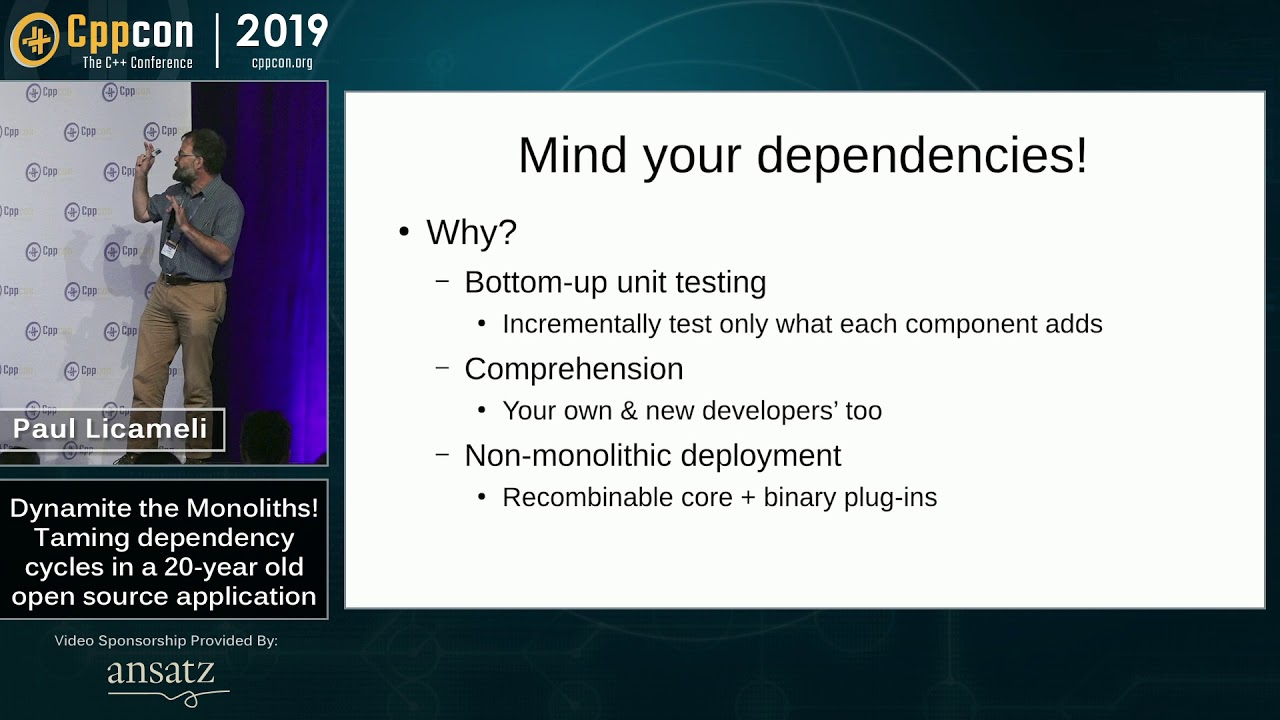Every cloud-related dialog has a “don’t show this again” in it which will cause you to, well, not see it again.
As for stability: We’re changing Audacity significantly and rewriting major parts of it for the first time. In the first 20 years of its life, Audacity has not really seen modern programming patterns like code reviews and test-driven development, so a lot of the program is held together rather awkwardly. Paul Licameli demonstrated this for just the problem of cyclic dependencies in 2019:
Since then, we’ve worked on making things modular, that is, instead of having a massive network of dependencies, the code is split up into smaller chunks that are more easy to work with. Some of them are even fully optional and can be disabled at runtime, which is what the Modules page in the preferences is all about.
In addition to that work, we’ve also added massive features. When we took over, Audacity had, outside of track gain, pan and envelopes, virtually no ability to do non-destructive work. It was practically not feasible to do meaningful audio production in it, as audio producers will tweak knobs all day long until it sounds right - and without non-destructive effects, you can often only really tweak a knob once. With 3.6, Audacity is actually become a viable audio production tool. It’s of course still lacking features typically found in DAWs (MIDI/virtual instruments are a glaring omission here), but if you’re working with real instruments or audio loops, you now can do most things you’d need to do to record, produce, mix and master.
And in addition to all that, we’re testing hundreds of different scenarios before each release and repeat each test on Windows, Mac and Linux, and if we find anything critical, we fix it before release. And in cases where we don’t find it before release, we often have a first patch out after a week.
Given these circumstances, I’d say that Audacity is exceptionally stable, and that, no, we don’t need to “get it straight again”. Instead, what we need to do is continue modernizing the program, both in terms of feature set and in terms of refactoring, restructuring and replatforming. There is going to be an end to this eventually - there’s only so many important features in a DAW, and only so much old things which need to be rewritten. As a wild guess, I’d say that we might be done with some of the most important work by 2030, and offer long term support versions which receive extra stability work at some point after that.
If you want to have the most stable experience you can have today though, I’d recommend using either 2.3.3 or 2.4.2 on Windows 7 and never connecting that system to the internet ever.
![]()
